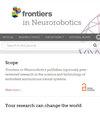Flexible control and trajectory planning of medical two-arm surgical robot
IF 2.6
4区 计算机科学
Q3 COMPUTER SCIENCE, ARTIFICIAL INTELLIGENCE
引用次数: 0
Abstract
This paper introduces the flexible control and trajectory planning medical two-arm surgical robots, and employs effective collision detection methods to ensure the safety and precision during tasks. Firstly, the DH method is employed to establish relative rotation matrices between coordinate systems, determining the relative relationships of each joint link. A neural network based on a multilayer perceptron is proposed to solve FKP problem in real time. Secondly, a universal interpolator based on Non-Uniform Rational B-Splines (NURBS) is developed, capable of handling any geometric shape to ensure smooth and flexible motion trajectories. Finally, we developed a generalized momentum observer to detect external collisions, eliminating the need for external sensors and thereby reducing mechanical complexity and cost. The experiments verify the effectiveness of the kinematics solution and trajectory planning, demonstrating that the improved momentum torque observer can significantly reduce system overshoot, enabling the two-arm surgical robot to perform precise and safe surgical tasks under algorithmic guidance.医用双臂手术机器人的灵活控制和轨迹规划
本文介绍了医疗双臂手术机器人的柔性控制和轨迹规划,并采用了有效的碰撞检测方法,以确保执行任务时的安全性和精确性。首先,采用 DH 方法建立坐标系间的相对旋转矩阵,确定各关节链接的相对关系。提出了一种基于多层感知器的神经网络来实时解决 FKP 问题。其次,我们开发了一种基于非均匀有理 B-样条曲线(NURBS)的通用插值器,能够处理任何几何形状,确保运动轨迹平滑灵活。最后,我们开发了一种通用动量观测器来检测外部碰撞,从而无需外部传感器,降低了机械复杂性和成本。实验验证了运动学解决方案和轨迹规划的有效性,证明改进后的动量力矩观测器能够显著减少系统过冲,使双臂手术机器人能够在算法指导下执行精确、安全的手术任务。
本文章由计算机程序翻译,如有差异,请以英文原文为准。
求助全文
约1分钟内获得全文
求助全文
来源期刊

Frontiers in Neurorobotics
COMPUTER SCIENCE, ARTIFICIAL INTELLIGENCER-ROBOTICS
CiteScore
5.20
自引率
6.50%
发文量
250
审稿时长
14 weeks
期刊介绍:
Frontiers in Neurorobotics publishes rigorously peer-reviewed research in the science and technology of embodied autonomous neural systems. Specialty Chief Editors Alois C. Knoll and Florian Röhrbein at the Technische Universität München are supported by an outstanding Editorial Board of international experts. This multidisciplinary open-access journal is at the forefront of disseminating and communicating scientific knowledge and impactful discoveries to researchers, academics and the public worldwide.
Neural systems include brain-inspired algorithms (e.g. connectionist networks), computational models of biological neural networks (e.g. artificial spiking neural nets, large-scale simulations of neural microcircuits) and actual biological systems (e.g. in vivo and in vitro neural nets). The focus of the journal is the embodiment of such neural systems in artificial software and hardware devices, machines, robots or any other form of physical actuation. This also includes prosthetic devices, brain machine interfaces, wearable systems, micro-machines, furniture, home appliances, as well as systems for managing micro and macro infrastructures. Frontiers in Neurorobotics also aims to publish radically new tools and methods to study plasticity and development of autonomous self-learning systems that are capable of acquiring knowledge in an open-ended manner. Models complemented with experimental studies revealing self-organizing principles of embodied neural systems are welcome. Our journal also publishes on the micro and macro engineering and mechatronics of robotic devices driven by neural systems, as well as studies on the impact that such systems will have on our daily life.
 求助内容:
求助内容: 应助结果提醒方式:
应助结果提醒方式:


